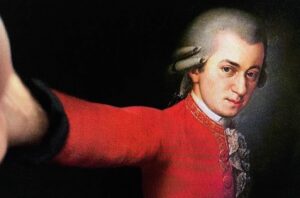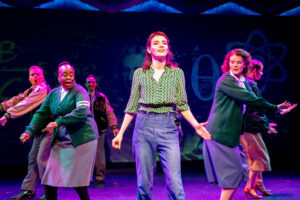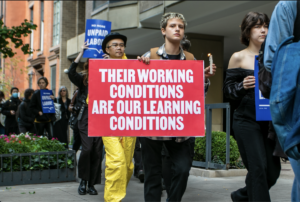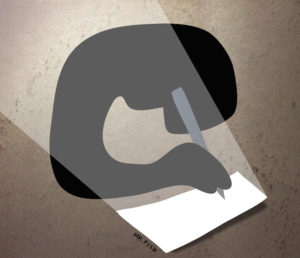Cultural Rebirth in the Old World
All of the populated (or formerly populated) world possesses its own past in ruined or replicated or restored form, capable of generating awe among the people of our time. But some live on because the crafts of the past continue to provide sustenance.FLORENCE, Italy — One might think the art of war, the art to which states are mainly dedicated, war for the sake of national aggrandizement, even when disguised — cynically, or disingenuously, as international idealism — in recent times the favored practice. In Renaissance Italy, family power and aggrandizement was openly pursued, even when described as for the greater glory of God.
The glory of God was the ostensible object of works and the practice of art, but, like war, the act of art was driven by a basic moral impulse of man — the need for the artist to fulfill himself, if not through power and conquest then in creation. The Renaissance in Italy was a period singularly enriched by artists of a collective and cumulative power that probably has no parallel in the history of western civilization.
Classical Greece had architecture, sculpture, drama and philosophy — the last not art but intimately connected to art (until very recent times, when its professional practitioners, for reasons difficult to comprehend, turned it into a sterile imitation of mathematics).
Mathematics is itself an art/science of glorious meaning, utility and autonomy, whereas in the past, philosophy and art were intimately connected, each — one could say — engaged in articulating in its vocabulary, or medium, what the other was compelled to create.
Both existed on a human continuum, the artist born of and connected to the craftsman and his practice of manual and material construction and creation, often of objects of the most humble if indispensable utility, purpose and origin — think of the bowl, the shoe, the garment, the dwelling: all of them the object of passionate aesthetic attention today, as well as essential to living. Each also responded to the impulse to ornament, celebrate and triumph.
Greek sculpture celebrates man and woman but also the gods, who in classical Greece barely differed from humans except in their transcendence of limitation. Philosophy in classical Greece surely is unsurpassed by what, during the millennia that have followed, elaborated and extended what began in Greece, and also, one might say, what was completed by the Greek intelligence — just as nothing that has been written since has fundamentally added to the comprehension of human existence and fate expressed in the Greek tragedies and Greek poetry.
These ruminations by a journalist, who deals with human political practice in what too often is a sordid world, are inspired by the collective — and are undoubtedly commercial in consideration, since the avowed purpose of the events in Florence during November 12-20, called “Florens 2010,” was economic expansion and improvement of a city and region by exploitation, utilization and development of their artistic and cultural legacy, conscious of its sources. The physical and environmental circumstances that historically formed Italy of the Renaissance are the same as those upon which the city’s and region’s present economic existence and prosperity rest.
Florence, more than almost any other city one might imagine, is the aesthetic expression and culmination of its historical experience, in that what it is, what it makes and how it lives, grows out of Florentine art and craft, successfully transmuted — an alchemy — from the past into something that is still alive.
All of the populated (or formerly populated) world possesses its own past in ruined or replicated or restored form, capable of generating awe among the people of our time. But the pyramids, Alhambra, Angkor, Versailles, the lines and geoglyphs of Nasca and Pampas de Jumana in Peru, the ruins of the cities of Teotihuacan, Mohenjodaro, Pompeii, all are dead, dead, dead. They inspire reflection upon — or fear of — mortality. Florence and the other art-cities of Italy (and elsewhere; Italy has no monopoly) live on because the art-inspired crafts of the past continue to provide sustenance for these cities.
I am not speaking of tourism, although tourism is undoubtedly the most important source of contemporary income for them, just as in France, which is one of the world’s main aerospace manufacturers, exporter of nuclear plants and a vast range of other heavy industrial equipment, high-speed rail, automobiles, chemicals, warships and cruise ships, computer analysis and design, and so on, yet still has tourism as its largest source of foreign revenue and remains the world’s most important tourism destination. But no one goes to France just to look at it, and the export economy is based on products of the industrial and electronic revolutions.
In Florence, the city itself lives and acts on the basis of its cultural legacy, in which the visitor may share. In doing so, that seemingly most ephemeral and fragile of modern manufactures, fashion — inspired by art and craft and created by craftsmen and women — finds its organic base (as with a flower) in an immensely rich cultural loam. That is what the events in Florence in this “First International Week on Cultural Heritage and Landscape,” were all about, conceived as an international conference and interaction to provide a source of, and inspiration for, development.
Florens 2010 attracted museum directors and curators from around the world, representatives of national gardens, the British National Trust, the American National Geographic Society, cultural and scientific ministries from France, Egypt and elsewhere. The deliberations rested in part on a strategic study, “The Economics of the Cultural Heritage and Landscape: a Systematic and Integrated Vision,” prepared by The European House-Ambrosetti, which also collaborated in the organization of the events. The sponsors included the Italian Ministries of Culture, Foreign Affairs, Land, Sea and Environment; the patronage of the Italian presidency (and of Britain’s Prince Charles), and Tuscan regional as well as Florentine urban and provincial authorities, fashion houses, industrial and craft federations, and regional banks and business enterprises.
Visit William Pfaff’s website for more on his latest book, “The Irony of Manifest Destiny: The Tragedy of America’s Foreign Policy” (Walker & Co., $25), at www.williampfaff.com.
© 2010 Tribune Media Services, Inc.
Your support matters…Independent journalism is under threat and overshadowed by heavily funded mainstream media.
You can help level the playing field. Become a member.
Your tax-deductible contribution keeps us digging beneath the headlines to give you thought-provoking, investigative reporting and analysis that unearths what's really happening- without compromise.
Give today to support our courageous, independent journalists.





You need to be a supporter to comment.
There are currently no responses to this article.
Be the first to respond.